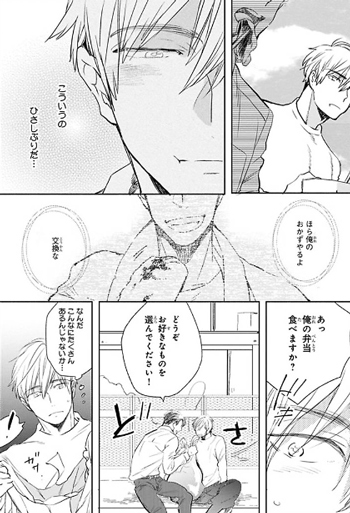
The next day, Kaoru, worried about the what would Kenshin do, goes to talk with him but she ends being kidnapped by Jin-e who wants to make Kenshin kill once again. Jin-e encounters Kenshin and after seeing how weak he is compared to the Bakumatsu period, he decides to kill him. Soon, both are hired to protect an ex-Ishin Shishi from a hitokiri called Udo Jin-e.

Sanosuke realizes that Kenshin is different from the Ishin Shishi that destroyed his group, the Sekihotai and becomes one of Kenshin's friends. The fight between Kenshin and Sanosuke continues resulting in the victory of Kenshin. The volume ends with a one-shot by Watsuki called Rurouni Meiji Swordsman Romantic Story. A few days later, a fighter-for-hire Sagara Sanosuke, challenges Kenshin to fight after discovering his past. During his stay in the dojo, Kenshin rescues an orphan called Myōjin Yahiko from a group of yakuza and takes him to live and train in the dojo. Before Kenshin leaves Tokyo, Kaoru offers him to live in her dojo. After investigating, Kenshin defeats the murderer using his sakabatō sword, which has its edge is reversed making it harder to kill. Soon he meets Kamiya Kaoru whose swordsmanship school is in danger as a murderer from the city claims to be from that school. "End-of-Volume Special: Rurouni Meiji Swordsman Romantic Story (1)"ĭuring the Meiji 11th (1878), a peaceful wanderer called Himura Kenshin, formerly known as the Hitokiri Battōsai arrives in Tokyo.In January 2008, Viz re-released the manga in a wide-ban format called "VIZBIG Edition", which is a collection of three volumes in one. Yahiko no Sakabatō was also serialized in Shonen Jump during 2006.


The last volume was published on July 5, 2006. The first volumes were published on an irregular, but a monthly basis was established by Viz media after volume seven due to good sales and consumer demands. The first volume of the series was released on October 7, 2003. Rurouni Kenshin was licensed for an English-language release in North America by Viz Media. Additionally, several parts of the following volumes were adapted into two original video animations series. The first eighteen volumes were adapted into an anime produced by Studio Deen, and aired in Japan from Januto September 8, 1998. Left out of the original volumes, the chapter added as an extra to the final kanzenban release. The chapter is focused on Myōjin Yahiko some time after the end of the series when he is requested to take care of a dojo for a short time. "Yahiko's Reversed-Edge Sword"), was originally published in Weekly Shōnen Jump after the conclusion of the series. A single chapter follow up to the series, Yahiko no Sakabatō ( 弥彦の逆刃刀 ?, lit.

In July 2006, Shueisha re-released the series in a twenty-two kanzenban special edition volumes. The first volume was released on Septemand the last on November 4, 1999. The 255 individual chapters known as "Acts", as well as a few one-shots authored by Watsuki were collected and published in 28 tankōbon volumes by Shueisha. The story takes place during the early Meiji period in Japan and follows a fictional assassin named Himura Kenshin, formerly known as the " Hitokiri Battōsai ( 人斬り抜刀斎 ?), who becomes a wanderer to protect the people from Japan. The first chapter of Rurouni Kenshin premiered in Shueisha's Weekly Shōnen Jump in 1994 and the series ran in the magazine until 1999. The chapters of the Rurouni Kenshin were written and illustrated by Nobuhiro Watsuki. Cover of the first tankōbon for Rurouni Kenshin, released by Shueisha on September 2, 1994


 0 kommentar(er)
0 kommentar(er)
